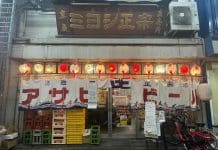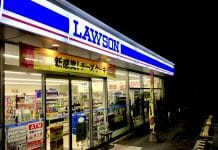Godzilla, Japan’s most famous movie monster, hardly needs an introduction. Beloved by monster movie audiences all over the world, Godzilla is a dinosaur – like giant creature with a nuclear breath, quietly living in the southern seas (vaguely around the southern-most rocky outcrops of the Ogasawara Archipelago) but from time to time causing a violent commotion before heading straight to the Japanese mainland, resulting in the large-scale destruction of major Japanese cities.
Table of Contents
Eiji Tsuburaya
Godzilla made its first appearance in the 1954 film Godzilla, produced by Toho, Japan’s largest film studio and directed by Ishiro Honda (1911 – 1993). Honda was one of the founding directors of the kaiju (monster) movie genre, along with his close collaborator, special effects master Eiji Tsuburaya (1901 – 1970).
During World War II, Tsuburaya had been tasked with shooting epic scenes of sea and air battles for propaganda purposes. With no actual war ships and airplanes available for his films, Tsuburaya developed his own method of model ships and aircraft standing in for the real thing.
His way of using model animation proved so convincing that the American forces who retrieved some of his films from captured war ships considered them to be real documentary footage.
After the war, Tsuburaya continued his work in the Japanese film industry. The Godzilla films eventually became his biggest claim to fame. There, an actor dressed up in a monster suit would convincingly destroy large cities meticulously re-build as model sets. Well, convincingly by the standards of the time.
The first Godzilla, released in 1954, portrayed Godzilla as a menacing figure, out to destroy Tokyo. An ancient creature re-awakened by exposure to radioactive testing in the Pacific Ocean, evoking fears and quite recent memories of the atomic bombings of Hiroshima and Nagasaki.
Still, the film proved very successful with Japanese audiences and it was quickly picked up for large-scale distribution in the U.S.
The film premiered in the U.S. in 1956 under the title Godzilla – King of the Monsters after some heavy editing, incorporating a decidedly American angle into the original story.
By that time however, the Japanese producers, very happy with the domestic box office results of the original, had already decided on a sequel, Godzilla Raids Again (Gojira no Gyakushu).
Movie market research was still in its infancy at the time at best. But any Japanese movie producer would know that when a movie with a particular focus on Tokyo was overwhelmingly successful, the focus of the sequel should be on the Kansai region, Japan’s second largest movie market.
Godzilla Raids Again (Japan, 1955) ゴジラの逆襲
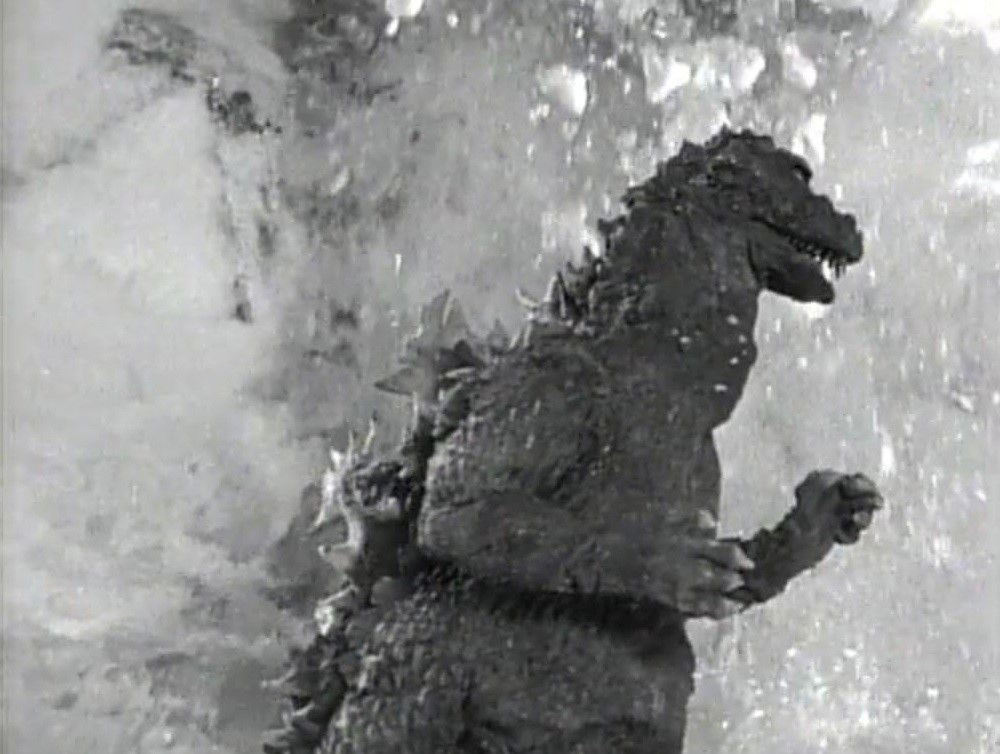
A seaplane pilot named Shoichi Tsukioka (Hiroshi Koizumi) guides a fishing trawler owned by Kaiyo Fishing Corp. of Osaka towards a school of skipjack bonito in the southern seas when he receives a distress call from the communication center back in Osaka. Another pilot belonging to the fishing company, Koji Kobayashi (Minoru Chiaki) had engine troubles and is now stranded on a tiny rocky island.
Tsukioka searches for Kobayashi, finds him and they start a little camp fire on the island in an attempt to somewhat dry their wet clothes.
Suddenly they hear a big noise right above them. Looking up, they see Godzilla fighting another giant monster, a sort of cross between a turtle and a hedgehog.
The two pilots hide in a narrow ravine until both monster plunge into the sea.
Upon arriving back in Osaka, a dinosaur expert is brought in from Tokyo. That expert, Dr. Yamane (Takashi Shimura) was already familiar to audiences from his appearance in the first Godzilla movie.
Dr Yamane shows footage of Godzilla in Tokyo (from the first Godzilla) and explains that Godzilla had been killed but that, of course, if there was one Godzilla there could be more. The first Godzilla had been killed via an Oxygen Destroyer. The inventor of that apparatus had since died and he had never revealed the secret of how his invention worked. Thus, humanity was without any protection against the new Godzilla.
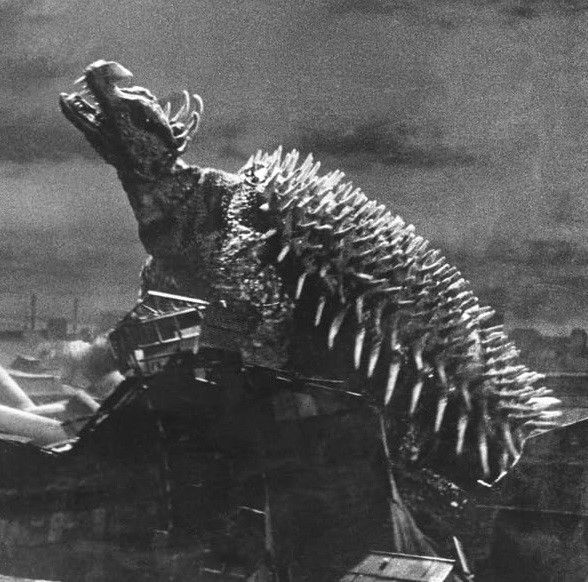
The second monster Dr. Yamane identifies as an Ankylosaurus. Thus, the monster receives the monicker Anguirus.
Suddenly, news come in that both monsters are headed straight for Osaka. Artillery, tanks and other military equipment are placed at the harbor in preparation.
Godzilla is sensitive to light, Dr Yamane explains. Thus, all the city lights are shut off, including the lights of Dotonbori, the brightest spot of Osaka. Airplanes drop flares elsewhere to lure Godzilla away from the city.
Godzilla shows up, nonchalantly kicks down a lighthouse and goes back to the sea. Everyone is relieved.
At the same time, a group of prisoners manages to escape from a transport van. A few of them steal a gasoline truck. In the ensuing car chase with the police behind them, they crash the truck into a harbor-site oil refinery, resulting in large explosions and a giant fire.
Godzilla gets excited by the huge flames and so is Anguirus. Right in Osaka harbor, right on the grounds of Kaiyo Fishing Corp. the two monsters start to battle each other again.
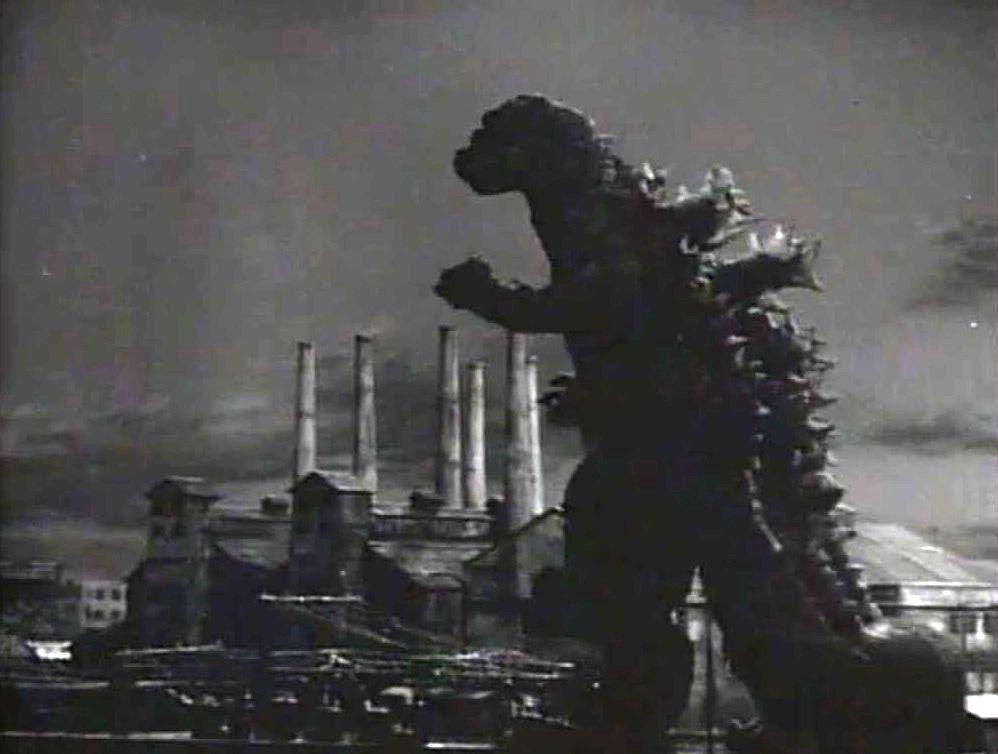
Their wild brawl leads them ever further into the city, leaving a path of destruction.
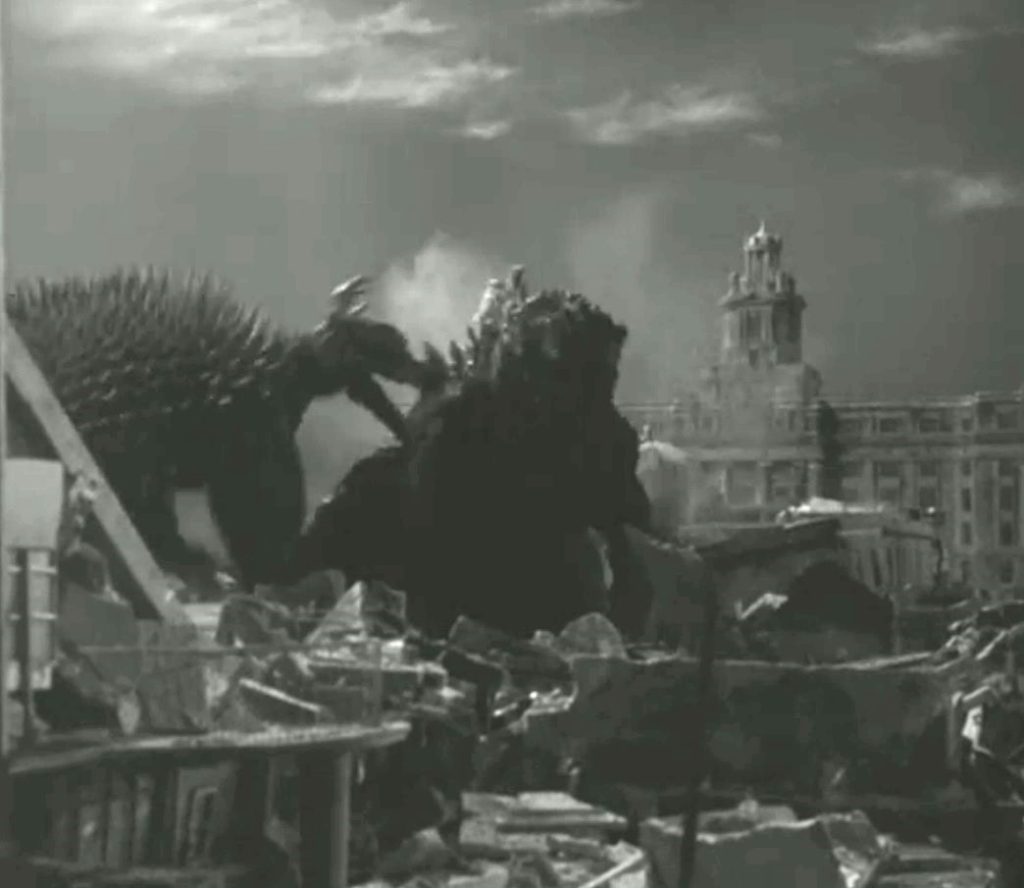
Old Osaka City Hall gets flattened in the process. The old city hall on Nakanoshima Island opened in 1921 and was in service until the early 1980s. From 1982 on, Japanese construction companies acted as new destruction monsters, tearing down the beloved structure and replaced it with the current city hall.

Then, Godzilla and Anguirus hit the grounds of Osaka Castle. They don’t leave a stone unturned.
Eventually, Godzilla kills Anguirus and returns to the sea. By that time, however, we are only halfway through the movie.
Kaiyo Fishing Corp. moves to Hokkaido, including all the pilots and their love interests and eventually, Godzilla makes another appearance on the snowy northern island…
Unfortunately, after the epic monster battle in Osaka, the movie loses much of its steam.
Godzilla Raids Again introduced the concept of two monsters battling it out to the Godzilla movie series. That concept has been followed up in all entries of the series since.
Godzilla vs Biollante (Japan, 1989) ゴジラvsビオランテ
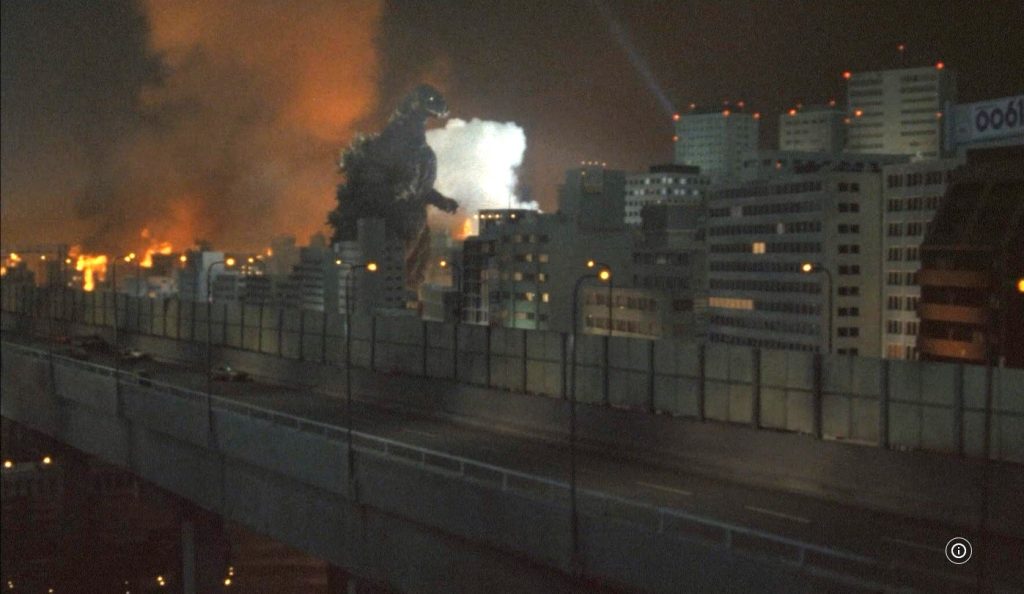
Godzilla didn’t do any damage to Osaka again until the 17th entry into the Godzilla franchise, Godzilla vs Biollante, directed by Kazuki Omori premiered in 1989.
The plot of the film is more concerned with biotech and genetic engineering than with nuclear issues. Computers play a big role and there is a lot of international intrigue.
The film is picking up on the ending of The Return of Godzilla (1984), the previous entry to the series. Godzilla is shown destroying skyscrapers in Tokyo’s Nishi Shinjuku neighborhood, subsequently Godzilla is locked up inside a volcano on Izu Oshima Island, close to Tokyo.
In the ruins of Nishi Shinjuku, agents of an American biotech company secretly retrieve samples of Godzilla’s DNA. Those are in turn robbed by an agent working for the fictional Middle Eastern country of Saradia.
The plot is convoluted and at first doesn’t involve Osaka at all. Let’s just say that a Japanese scientist inadvertently creates a giant monster he later names Biollante, crossing the DNA of Godzilla with the DNA of roses. It’s his way of putting new life into the memory of his daughter who was killed in a terrorist attack while both were working at a biotech lab in Saradia.
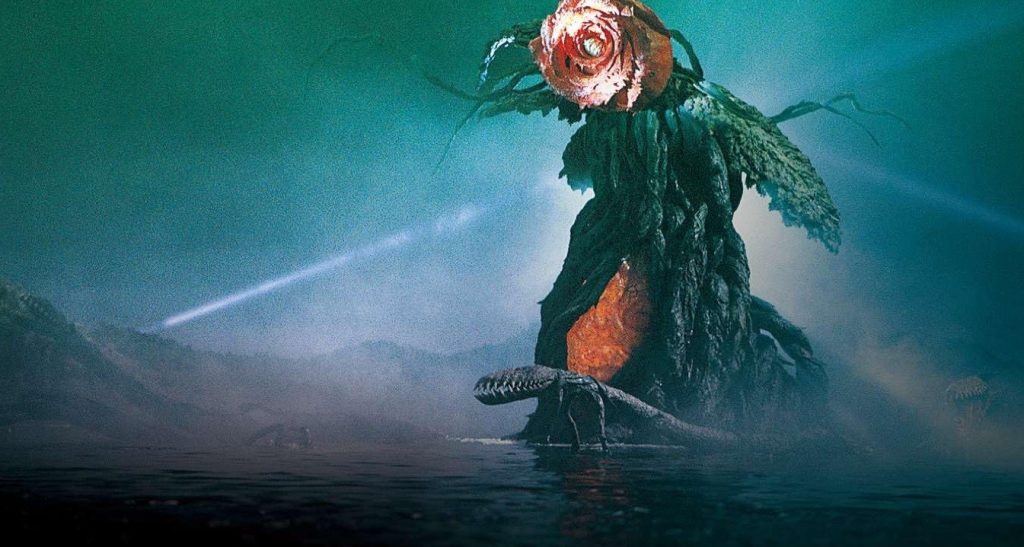
Biollante has a great battle with Godzilla in Lake Hakone, close to Mt Fuji. Godzilla destroys Biollante, then heads towards the nuclear power plant at Tsuruga, Fukui Prefecture to replenish his nuclear properties.
A psychic medium tries to get Godzilla off that cross-country path, directing him to the sea off Kansai. This however leads Godzilla right into Osaka.
Osaka is introduced with a shot of Osaka Castle. A concert takes place at Osaka Jo Hall, located on the castle grounds. People are quickly evacuated.
Then Godzilla hits. He goes straight for Osaka Business Park in Chuo-ku, right next to Osaka Castle, destroying modern high-rises right and left along the Neya River. The tallest new high-rise there at the time was the Twin 21 building complex. It was much taller than Godzilla.
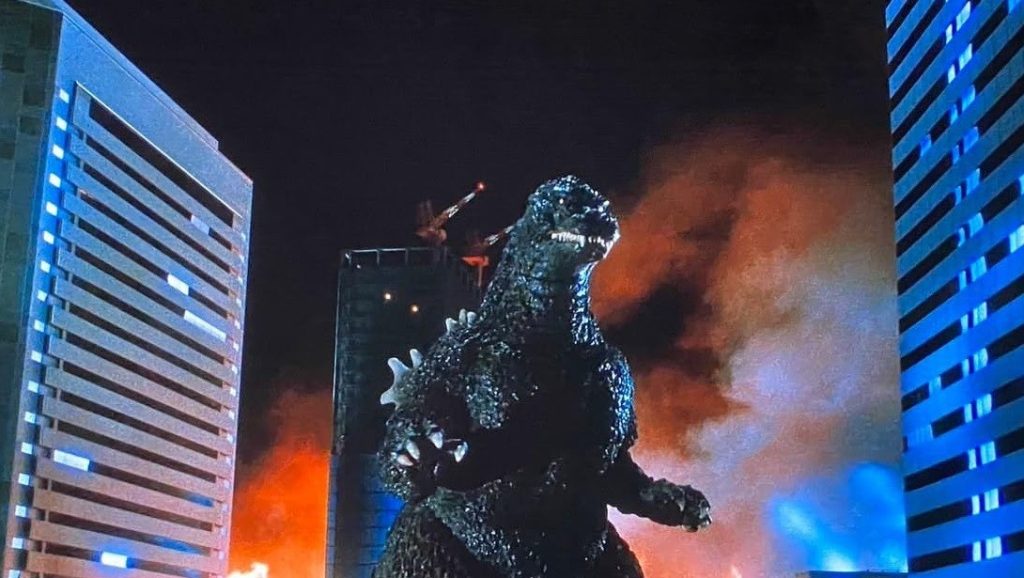
One of the minor heroes of the film shoots a special rocket at Godzilla from one of the Twin 21 windows. It results in Godzilla destroying the whole of the Twin 21 complex.
Erected and operated by Matsushita Kosan Corporation, the Twin 21 complex, completed in 1986, featured the tallest buildings in Osaka at the time.
A spokesman for Toho Studios informed Matsushita Kosan that their Twin 21 would be destroyed by Godzilla in their new film.
Reportedly, the Matsushita Kosan representative answered, “If Godzilla destroys it, I would be happy with it.” He quickly understood that Godzilla would elevate the local landmark to a structure made famous on movie screens across the globe.
The destruction of the Twin 21 ends Godzilla’s appearance in Osaka but is not the end of the movie. More action unfolds near Wakasa Bay, Sea of Japan close to the Tsuruga nuclear power plant in Fukui Prefecture. There, Biollante shows up again in a mutated form, the murderous Saradian agent finally meets his fate… all that has however nothing to do with Osaka.
Godzilla vs Mechagodzilla II (Japan, 1993) ゴジラvsメカゴジラ

Godzilla vs Mechagodzilla II, directed by Takao Okawara features three monsters. Of course, there is good old Godzilla himself. Then, there is Mechagodzilla, a man-made combat monster resembling Godzilla but made of metal and equipped with the most modern technology, designed to fight Godzilla. The third monster is Rodan, a flying dinosaur, modeled on the Pteranodon, an actual pre-historic dinosaur with huge wings.
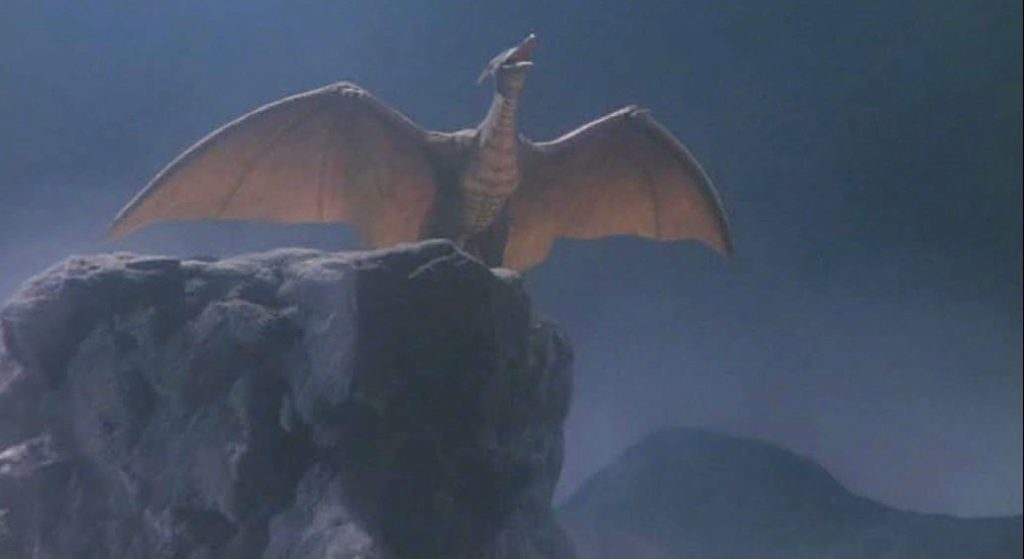
Rodan had made its first appearance in the 1956 movie Rodan (Sora no Daikaiju Radon), a Toho production directed by Ishiro Honda and realized by the original Godzilla cast and crew including Eji Tsuburaya as special effects master.
Curiously, the German release title for the 1956 Rodan was Rodan – Die fliegenden Monster von Osaka (Rodan – the Flying Monsters of Osaka). Just that there was no Osaka in the movie at all. The whole movie takes place in Kyushu, the big city destroyed is Fukuoka.
Rodan, known to Japanese audiences as Radon, later entered the Godzilla franchise in various films.
Furthermore, Godzilla vs Mechagodzilla II features Baby Godzilla. We even see how it breaks out from its egg under human supervision. Naturally, Baby Godzilla is extremely cute.
Baby Godzilla is born and held at the National Godzilla Research Center in Kyoto. The baby makes telepathically contact to Godzilla and Godzilla shows up to retrieve his child. Despite a grand battle somewhere in Mie Prefecture, Mechagodzilla can’t stop Godzilla on his way to Kyoto.
Godzilla lays waste to the city, blowing up Kyoto Tower first before making his way to the Research Center. Interestingly, he spares the old temples and shrines while knocking down any new structure in his path.
The researchers taking care of Baby Godzilla realize that it makes telepathic contact. They calm Baby Godzilla down and eventually it stops sending the telepathic rays. Without them, Godzilla can’t locate his baby.
Frustrated, Godzilla makes his way back to the sea – right through Osaka. This time, he doesn’t deliberately destroy the city. He just stomps through it, briefly.

We can spot Godzilla making his way through the Chayamachi neighborhood of Umeda, Kita Ward. He passes by the Mainichi Broadcasting System (MBS) Building as well as nearby Applause Tower, housing the Umeda Arts Theater on the lower floors.
Godzilla doesn’t touch either structure and next we are shown a newspaper headline saying that Godzilla had entered the waters of Osaka Bay.
Further battles ensue, Rodan makes its way back into the fights… but all that takes place far from Osaka. Chiba is the city that has to suffer the final battle between all three monsters.
Godzilla vs Megaguirus (Japan, 2000) ゴジラ×メガギラス G消滅作戦
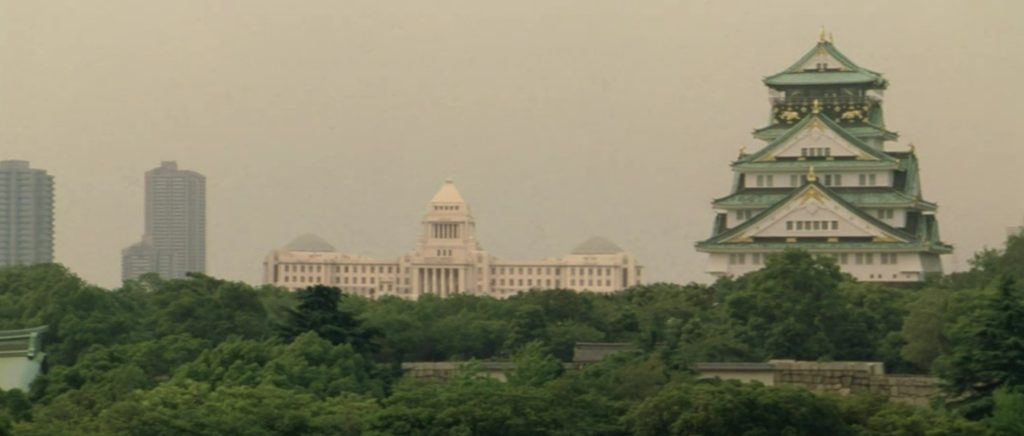
From Godzilla Raids Again on, the typical new entry into the Godzilla franchise has been connecting to the previous film, the story picking up from there.
Godzilla vs Megaguirus, directed by Masaaki Tezuka, breaks with that tradition. The beginning harks all the way back to the very first Godzilla from 1954. Scenes of Godzilla’s destruction of Tokyo from that film are re-staged, then a news broadcast comes into focus, relaying an alternative history of the whole franchise.
The Oxygen Destroyer used to kill Godzilla at the end of the very first film didn’t actually work, the news anchor says. Godzilla survived and made his way back into the sea unscathed.
Because of the large-scale destruction of Tokyo, the Japanese capital was moved to Osaka. A replica of the Diet Building in Tokyo, seat of the Japanese parliament, has been erected right next to Osaka Castle.
The news anchor goes on saying that in 1966, Godzilla raided Japan’s first nuclear power plant in Ibaraki Prefecture to replenish his energy.
Thus, nuclear power was prohibited in Japan and a powerful new, ecologically correct green plasma energy source had been developed. The facility producing that “Green Energy” is located on Nakanoshima, a river island right in the center of Osaka.
Godzilla, in need for new energy doesn’t really care for the source of his energy. The “Green Energy” suites him just as well.
In 1996, in the midst of a conference promoting the “Green Energy” Godzilla strikes Osaka, heading straight for the energy plant.
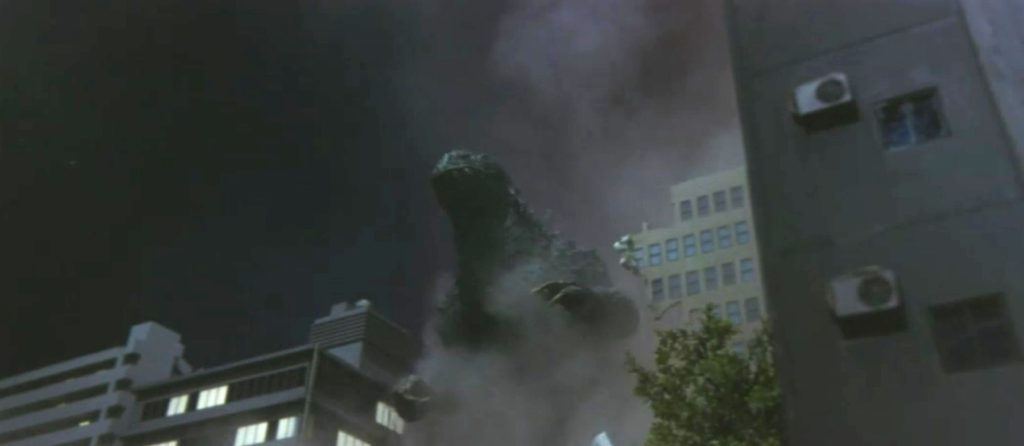
The special forces defending the city are powerless. Their leader gets killed by debris crashing down when Godzilla rips open the energy factory structure.
Kiriko Tsujimori (Misato Tanaka), a young female special forces agent, closely witnesses the death of her admired commander. From that moment on, she dedicates her life to eradicating Godzilla. Soon, she becomes a leading force in the G Graspers, the special forces defending Japan against Godzilla.
With that premise, you would expect Osaka to be a central location for the movie. But, no.
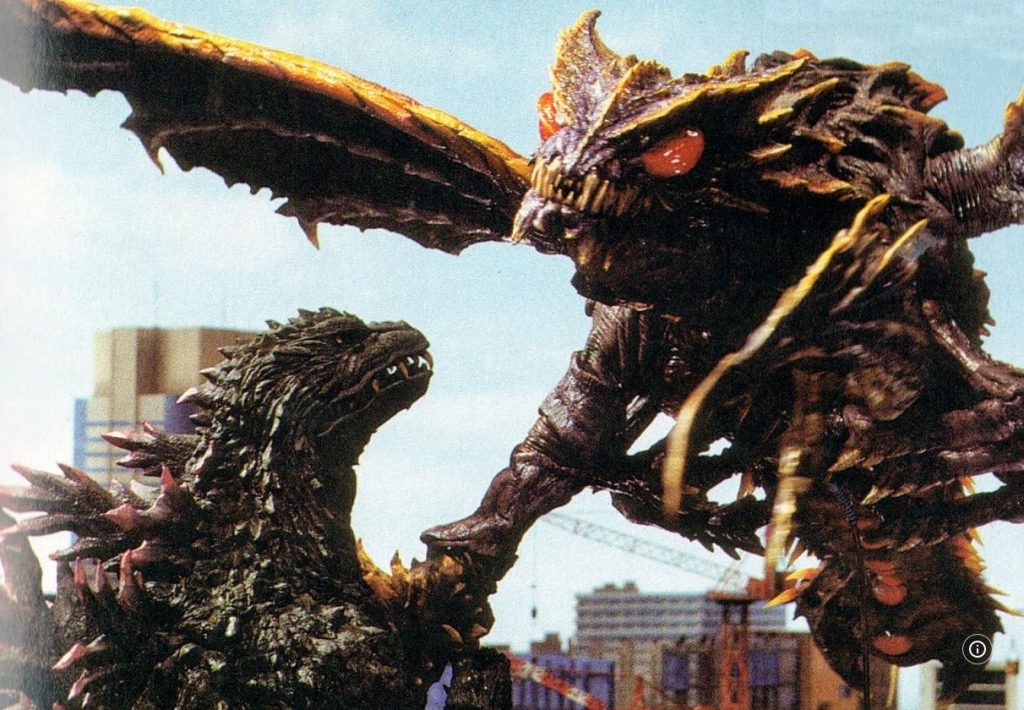
The ensuing story, as exciting and entertaining as it is, takes largely place in Tokyo. A new weapon against Godzilla was developed, creating small cosmic black holes. A test of the system however wakes up a sort of dinosaur – age giant dragonfly. At first as a locust – like swarm, then solidifying into a giant monster named Megaguirus.
It’s an amazingly innovative story featuring plenty of detailed location shots. Just that those locations are Tokyo’s Shibuya and Odaiba … after it’s grand entry in the beginning of the movie Osaka simply disappears from the plot.
Too bad… in the movie, Osaka is Japan’s capital city after all.
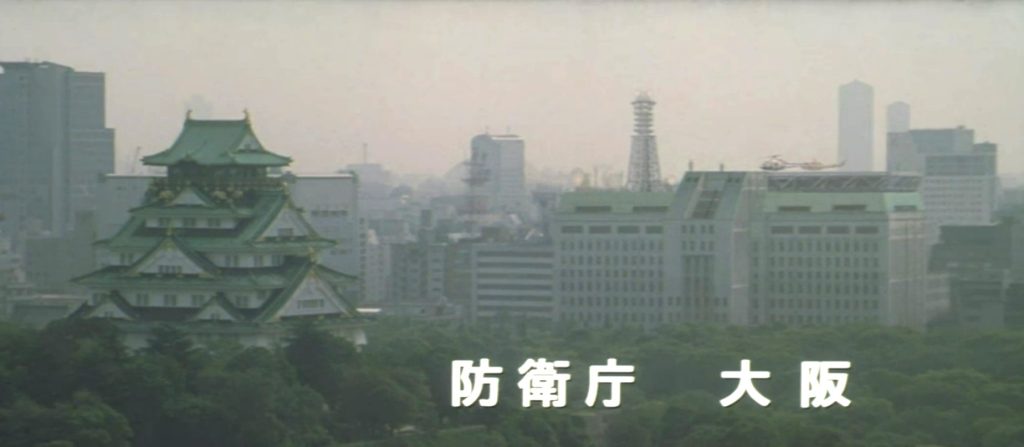
The Godzilla movie franchise is still going strong these days. Time for Godzilla to return to the city in a serious way.
How about the Osaka Expo 2025? Should we expect Godzilla to make a comeback to the city at that occasion?






